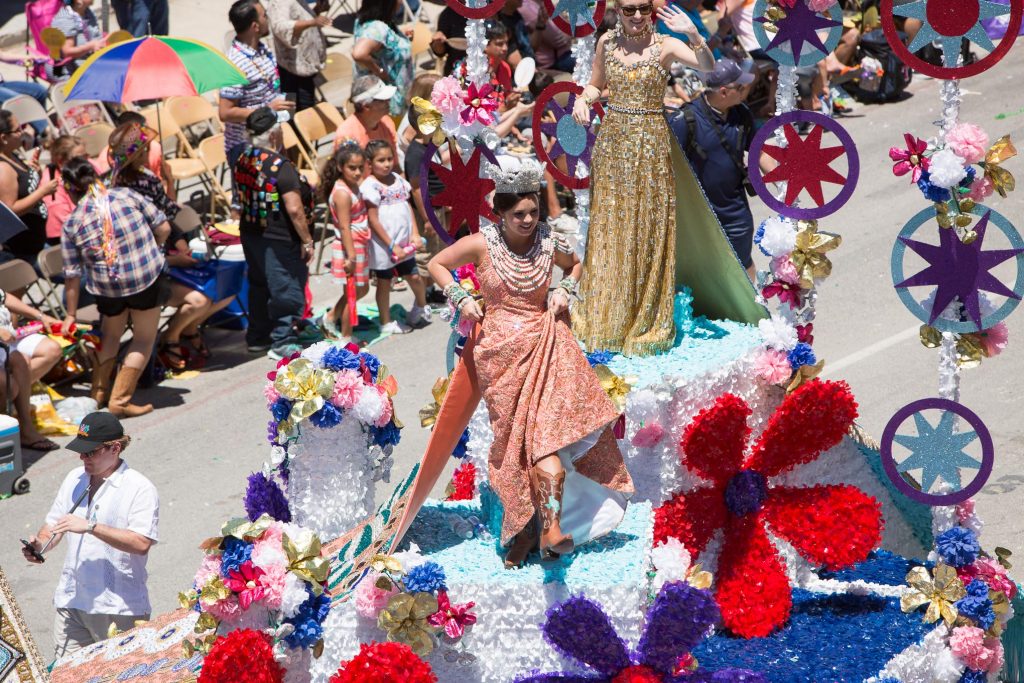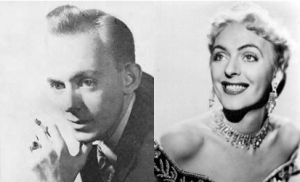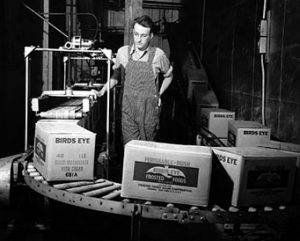Colorful floats; streets closed with barricades; people covering the sidewalks and setting up their lawn chairs to have a good view, having the day off from school; the Marching Bands from High Schools and Universities, decorating their instruments with ribbons, preparing their formation under Highway 37 on Grayson Street; the Fiesta Royalty putting on their best pairs of decorated shoes before stepping onto their throne, mounted on one of the biggest of the parade floats. If you’re a native San Antonian, you know exactly what grand celebration is about occur and what has been going on for the days before; it is part of Fiesta, the ten-day city-wide celebration; it is the Battle of Flowers parade. The Battle of Flowers is a 2.6-mile parade that runs through downtown San Antonio, typically one of the closing events of the Fiesta celebration. This Parades begins on the edge of downtown, and continues onto three major streets: Broadway, Alamo, and Commerce.1 Local schools participate in this parade; their dance troops, mariachi bands, ROTC, and Marching Band programs participate and walk the parade alongside the Texas Cavaliers, the Fiesta Royalty, and the Mayor. Although this annual event has become a hallmark for San Antonians, many don’t know how or when it all began. Let’s go back to its origins, back to the last decade of the nineteenth century in San Antonio.

Originating in 1891, the Battle of Flowers parade was created as a tribute to all those who fought and who fell at the Battles of San Jacinto and the Alamo.2 The idea of a grand celebration to commemorate these heroes came from a tourist, the native-Chicagoan W. J. Ballard. He believed that a proper tribute should be made, and asked a group of local ladies why this had not been the case just yet. His question extended through the city and made its way into newspapers and gained the approval of the community almost instantly. The anticipated idea aroused a spark of interest in Ellen Maury Slayden, a native Virginian elite, who had found her way to San Antonio by marriage to a merchant and later congressman, James L Slayden. Slayden then decided to bring Ballard’s idea to life, and since she knew it was almost impossible on her own, she decided to enlist the help of another newcomer to the area, J. S. Alexander. They both decided to take this on as a pet project of theirs, with the help and support of their husbands. Alexander, a banker before arriving in Texas, provided information on some familiarity he had had overseas about seeing a parade surrounded by flowers, where carts were decorated with flowers. Slayden also remembered similar instances in celebrations she knew about across Mexico and Spain, giving the basis for what the parade would become. The husbands, and many of the elite men of San Antonio, took over the project and had gentlemen speak on behalf of the ladies at the committee meetings; however, as the project grew, the ladies wanted to make sure that it was still a women’s project and continued to provide input and ideas, thus creating the Battle of Flowers Association.3

The parade was originally intended to be an April 21st celebration to celebrate the 55th anniversary of the victory of the Battle of San Jacinto; however, coincidentally, San Antonio was just then expecting its first-ever visit from the White House, the 23rd president of the United States, President Benjamin Harrison. As soon as word got out, the city became ecstatic and prepared a celebration to welcome the President, including moving the parade a day ahead of its original date. With the dates set in stone, the first official planning committee meeting took place only a mere seven days prior to the event. They were frantically trying to gather flowers from nearby towns, since San Antonio had just experienced some heavy rains, which had destroyed most flower gardens, leaving the city with a shortage of flowers just before the parade. Trains were rushed in with shipments of flowers from nearby towns. Other means of making up for the shortage were discussed as well, such as dressing the children up as flowers and having bicyclists decorate their mobiles with whatever blossoms they found and join the parade.4 In the days leading up to the parade, everything seemed all set to go, except for the weather. The city had been plagued with days of heavy rain, and the whole city was hopeful that the rains would cease as the day approached; however, they were wrong. On the morning of the parade, the rains didn’t have mercy on their plans, and as the President’s train arrived, the downpour became continuous. But the rains didn’t stop the city from providing the President with a warm welcome; however, it did postpone the flower parade for the following week, which, of course, would mean that the President would be long gone by then. When the warm weather finally arrived the following week, the parade went as planned; and it was so successful that the committee pushed to have it continue as an annual celebration. It has since been celebrated since 1891, except for the years during World Wars I and II.5

By 1985, the parade continued to grow into the week-long celebration known today as Fiesta. And as the years went by, Kings and Queens were elected as Fiesta Royalty.6 The Parade continues to grow, and so does its recognition across the city and the state. It is now funded by private associations. To this day the parade is one of the closing events of the city-wide, week-long Fiesta party and continues to generate community involvement. Every April, San Antonio puts on a fantastic show, and without a doubt, it all goes back to a Chicagoan tourist, two ladies, and one united community.

- Battle of Flowers, Official Website: Battle of Flowers About us (battleoflfowers.org, 2018). ↵
- Handbook of Texas, June 2010, s.v “Fiesta San Antonio,” by Mrs. Willard E. Simpson, Jr. ↵
- Jack Maguire, A Century of Fiesta in San Antonio (Austin, Texas: Eakin Press, 1990), 13-15. ↵
- Jack Maguire, A Century of Fiesta in San Antonio (Austin, Texas: Eakin Press, 1990), 17. ↵
- Jack Maguire, A Century of Fiesta in San Antonio (Austin, Texas: Eakin Press, 1990), 17; Laura Hernandez-Ehrisman, Inventing the Fiesta City, Heritage and Carnival in San Antonio (New Mexico Press,2008), 21. ↵
- Handbook of Texas, June 2010, s.v. “Fiesta San Antonio,” by Willard E. Simpson, Jr. ↵



117 comments
Alexandra Camarena
I loved this article! I was born and raised in San Antonio and Fiesta is something I look towards every year. However, whenever I think of Fiesta I think of all the celebrations. When in reality we should also be aware for the history that is associated with these celebrations. I thought the author did a very nice job of explaining the history and writing a compelling article. I also loved the images the author chose I believe they are a very good representation of the Battle of Flowers parade.
Juan Arceo
Even with me being from San Antonio, I unfortunately have never been able to attend the Battle of Flowers parade. Thanks to this article, I know have a clearer understanding as to why this whole event even originated. It is interesting that a parade about Flowers and the beauty of it, was in remembrance of The Alamo and The Battle of Jacinto is fascinating to me. I hope to one day actually go and experience The Battle of Flowers Parade once and for all.
Cristianna Tovar
The author did a great job of engaging their audience. I loved the descriptive opening paragraph because it brought back so many memories. As a person from San Antonio, I have been attending the Battle of Flowers parade each year ever since I was little. I remember seeing my older cousin play in the parade with his high school band; it was amazing to see my own high school play at the parade years later because I got to say hi to and cheer on all of my friends. The Battle of Flowers parade is a must-visit for anyone new to San Antonio. It’s a great experience!
Courtney Pena
I have never heard of Fiesta but it sounds like a fun event. The Battle of Flowers parade was made to honor those that fell at the Battles of San Jacinto and the Alamo. It seems like a good way to honor them. The community gathers together for a fun 10 day city wide celebration and watches the parade that runs through downtown San Antonio.
Carlos Tami
I have lived my entire life in San Antonio and I actually have not been to the parade on the last day. I always knew what the celebration was but never the why. It is something we just come to know exists as children and the schools we attend did not take the time to explain the history behind this celebration. I also think it’s hilarious how they thought the weather would lighten up for them, Texas is very ironic when it comes to planning events and the ever unpredictable rain patterns we get. Really great job on this article, it was all new information!
Alin Bocardo Felix
Since I began living in Texas back in August, I have heard of Fiesta, which is apparently a city-wide party for a couple of days. I appreciate the culture in San Antonio so much, but even more so knowing the reason behind the parading. The Battle of Flowers is something new for me, and it unfortunate that the President at the time was not able to see the great turnout, although I admit I expected the article to have a plot twist and have a great turn of events; it didn’t occur that way. The article is very well written and detailed enough for the reader to perceive the happenings.
Hannah Hennon
This article was so interesting. I visit my family in San Antonio on all my school breaks, and I never knew why we went and celebrated during Fiesta. I did not know it was in honor of The Alamo and The Battles of Jacinto. When I told my family, they did not know either. I think it is cool that there is a whole purpose in celebrating Fiesta that I did not know before.
Judy Reyes
Being from San Antonio, it has been a family tradition to go to the battle of the flowers parade every year. We would have the day off from school and go see all the floats and bands walking down the streets in the parade. However, I never thought about how it all began. This article was very informational in allowing people to know the founding of Battle of the Flowers and Fiesta.
Felipe Macias
It is interesting to see how much tradition has managed to stay the same throughout the decades and the passion the people of San Antonio have to keep the tradition alive. Having never attended, this article makes me want to at least check out the environment for a day and experience the joy the parade brings to people.
Mitchell Yocham
When I was growing up I had never learned what the Battle of Flowers parade was about until just now, I had no idea it was for the anniversary of the win of San Jacinto. However, I do think that it is funny to think that they changed the original anniversary date and plan to accommodate for the President coming to see them, and even though he didn’t end up staying for it due to heavy rains; The celebration became an annual celebration.